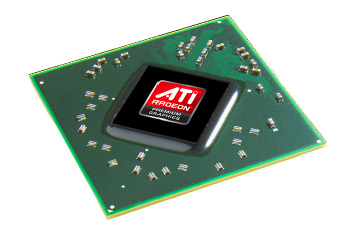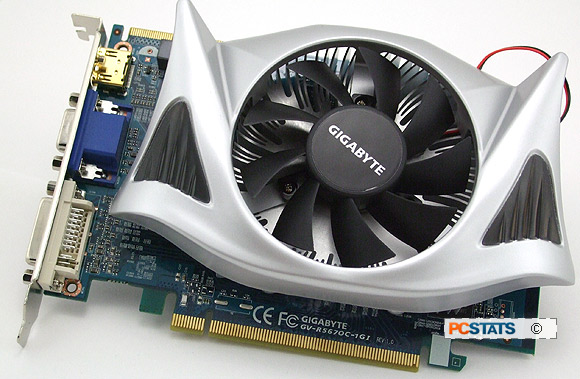 It has only taken ATI a few months to go from the first
DirectX 11 graphics card (the high-end Radeon HD 5870) to transitioning DX11
GPUs into the mid-range and mainstream markets. ATI's mainstream DX11 GPU will
be known by its street name as the Radeon HD 5670, but inside ATI it goes by its code name, 'Redwood'. Like
most mainstream GPUs, 'Redwood' is a scaled-down version of a flagship GPU,
in this case the RV870 GPU, code named 'Cypress'.
It has only taken ATI a few months to go from the first
DirectX 11 graphics card (the high-end Radeon HD 5870) to transitioning DX11
GPUs into the mid-range and mainstream markets. ATI's mainstream DX11 GPU will
be known by its street name as the Radeon HD 5670, but inside ATI it goes by its code name, 'Redwood'. Like
most mainstream GPUs, 'Redwood' is a scaled-down version of a flagship GPU,
in this case the RV870 GPU, code named 'Cypress'.
As a mainstream GPU, the ATI Radeon HD 5670 GPU is
designed to be economical. Since it's produced at a 40nm process and has just
627 million transistors (compared to the massive 2.15 billion inside the
flagship 'Cypress' GPU), it's actually quite small. The smaller size also means
it cuts down on power usage with just a 61W TDP, low enough that Radeon HD 5670
graphics cards can be powered entirely by the PCI Express graphics bus, with no
auxiliary power connectors required.
Don't let the small size fool you, the 'Redwood' GPU still has some bite
thanks to a 775MHz core clock speed and the use of GDDR5 memory. GDDR5 memory
transmits information at four points of its clock cycle, which quad-pumps its
memory rate from 1000MHz up to 4000MHz. This memory then communicates with the
GPU along a 128-bit wide memory bus.
Both 'Redwood' and 'Cypress' share a number of new
technologies, the most important of which is support for DirectX 11. This latest
revision to Microsoft's graphics hardware standard brings two major additions to
the DX11, tessellation and compute shaders. Tessellation is a method of adding
density and complexity to a 3D mesh. It can take a simple, low-poly model and break up the
geometry into more complex portions, adding another layer of detail on top of
a mesh. The end result is better-looking, more detailed graphics with
a very low cost in performance.

Compute shaders allow DirectX 11-based GPUs to do tasks
normally reserved for CPUs. This will play a big role in desktop applications
that harness the power of a PCs videocard, as well as enable
games programmers use the GPU to compute things like physics and AI. Again, this
opens up the possibility for more immersive gaming, but with a miniscule
performance penalty when compared to using a CPU.
|
Mainstream
Videocard Comparison Chart |
|
ATI Radeon 4770 |
ATI Radeon 4850 |
ATI Radeon HD
5670 |
ATI Radeon HD 5750 |
NVIDIA Geforce GTS 250 |
| GPU Code Name: |
RV740 |
RV770 |
RV810/Redwood |
RV830/Juniper |
G92+ |
| GPU Process: |
40nm |
55nm |
40nm |
40nm |
55nm |
| GPU Transistors: |
826 Million |
956 Million |
627 Million |
1.04 Billion |
754 Million |
| TDP: |
80W |
110W |
61W |
86W |
150W |
| GPU Core Clock Speed: |
750MHz |
625MHz |
775MHz |
700MHz |
738MHz |
| Memory Speed: |
800MHz(3.2GHz GDDR5) |
993MHz(1986MHz
GDDR3) |
1GHz(4GHz GDDR5) |
1.15GHz(4.6Ghz GDDR5) |
1100MHz(2200 GDDR) |
| Memory Capacity: |
512 |
512MB/1GB |
512MB/1GB |
512MB/1GB
|
512MB GDDR3 |
| Memory Bus Width: |
128-bit |
256 |
128-bit |
128-bit |
256-bit |
| Stream Processors: |
640 |
800 |
400 |
720 |
128 |
| Texture units: |
32 |
40 |
20 |
36 |
64 |
| Raster Operators: |
16 |
16 |
8 |
16 |
16 | | |
The
GPU configuration of the Gigabyte GV-567OC-1GI makes for some interesting competition against last generation's midrange
videocards. While the Radeon HD 4850 has a lower core clockspeed and slower GDDR3 memory, it
also has double the amount of stream processors and a wider memory bus.
The NVIDIA Geforce GTS 250 also has a slower core clockspeed and fewer stream
processors, but makes up for it with more texture units and raster operators.
All of these videocards will crowding store shelves (and e-tailer listings) at
the $100-$150 CDN price point, so it will be very interesting to see which
videocard comes out on top.
Fortunately we have all of them lined up on the PCSTATS test bench, so get
ready to see a GPU battle royal later on in this review! First though, let's
see how fast we can crank a Radeon 5000-series GPU...
